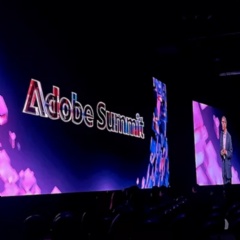Understanding Adobe Edge Delivery Services for Better Content Production
The modern landscape for web development is evolving so rapidly that it can be hard to keep up with new technologies and platforms as they enter the market. In fact, if you’ve been paying attention to trends in recent years, your head may be chock full of some of these terms and acronyms; we’ve got PWAs, SPAs, AMPs, microservices and monoliths, headless or headful architecture, and stacks of every flavor. Are you serverless? Are you API-first? What about Cloud-native? Have you considered JAMstack, or MACH architecture? Or are you building a DXP?
As if that wasn’t enough, if you live in or around the Adobe ecosystem this year, you may have heard of a few new platforms from them as well, and if you feel some understandable confusion, this article aims to help.
What are Adobe Edge Delivery Services?
Have you heard of Adobe Helix, Franklin, or Next-gen Composability? If so, all four of these titles refer to the same entity, and as its “platform-of-many-names” status may indicate, Edge Delivery Services (EDS) represents several different capabilities to different people.
Some details you should know:
- EDS is a new content management system for creating and publishing pages using the tools your authoring team are already innately familiar with: Google Docs and/or Microsoft Sharepoint.
- EDS is a tool for building headless front-end web experiences using technologies your development team are already innately familiar with: Javascript, HTML and CSS.
- EDS is a content delivery platform that serves mobile-first web pages to your customers straight from the edge with 100% lighthouse scores out-of-the-box.
The keen-eyed reader may discern that there is a common theme across all three of those statements, which is “meet them where they are”. Let your content and technology experts do what they do best with the tools they already know and provide your customers and end-users with lightning-fast load times.
Author, collaborate, preview, and publish with the same tools
EDS represents a seismic shift from what we ordinarily think of as a content management system (CMS). For those familiar with content creation pipelines, finally hitting that big “publish” button is typically the last stage of a multi-step process, often involving several different resources or departments.
Today, your team is likely using a cloud document editing suites like Google Docs or Microsoft SharePoint for collaborative content creation. While these tools are ideal for drafting and approvals, translating content to your website often involves manual steps, such as copying and pasting to create modules that fit the context of your site’s backend. In AEM for example, this includes configuring components or content fragments, adding nodes, and publishing. As changes occur, the source of truth shifts from the document suite to the CMS, presenting a choice: make all changes in the CMS or face the challenge of upstreaming CMS-only changes back to the document suite.
EDS turns this current reality on its head thanks to the AEM Sidekick, a browser extension compatible with Chrome and Safari web browsers which renders the tedious process described above obsolete. The Sidekick extension can be configured to point at your project’s Github repository and will render a new toolbar at the top of your browser window with some context-aware actions. Now when you’re working on your content document, you’ll see ‘Publish’ and ‘Preview’ buttons that do precisely what you expect them to. And when viewing a live or previewed page on the frontend of your site, there will be a shortcut button to get directly back to your editable document to make additional changes.
The source of truth for your content remains with the collaboration software your team already uses, and dependencies on different team members in your organization are drastically reduced, providing your content team even greater velocity and agility to reach your customers.
Develop with fundamentals, not frameworks
Anyone hiring for engineering and technology positions lately understands how difficult it can be to find the right talent for your teams. Perhaps you are interviewing a Javascript developer, but for your project, it’s critical that they have experience with React Query.
With EDS, we can dispose the need for complex frameworks, libraries, and abstractions and just focus on writing clean, performant code.
Don’t just be mobile-first, be performance-first
We all know that page speed is critical for conversions, and in few other contexts can the phrase “time is money” be taken more literally than on the web. Each additional second that a page takes to load can lead to a 7% loss in conversion, and more than half of users will simply abandon a purchase flow if it takes more than 3 seconds for the next step to finish loading. These kinds of delays can be extremely costly, but performance is where EDS shines. EDS repositories ensure that not only will the performance of your site start out strong, but you have the tools to keep it that way. Coupled with RUM for real-user insights, you can rest assured in the knowledge that your bounce rates stay low, and conversions stay high.
So, is this a one-size fits all solution? Far from it. There are some companies and projects for which EDS can represent real solutions to complex problems, but there may also be those for whom this is not the right choice. There are many benefits to EDS but there are caveats and drawbacks as well.
See us at Adobe Summit 2024
( Press Release Image: https://photos.webwire.com/prmedia/7/319512/319512-1.jpg )
WebWireID319512
This news content was configured by WebWire editorial staff. Linking is permitted.
News Release Distribution and Press Release Distribution Services Provided by WebWire.
